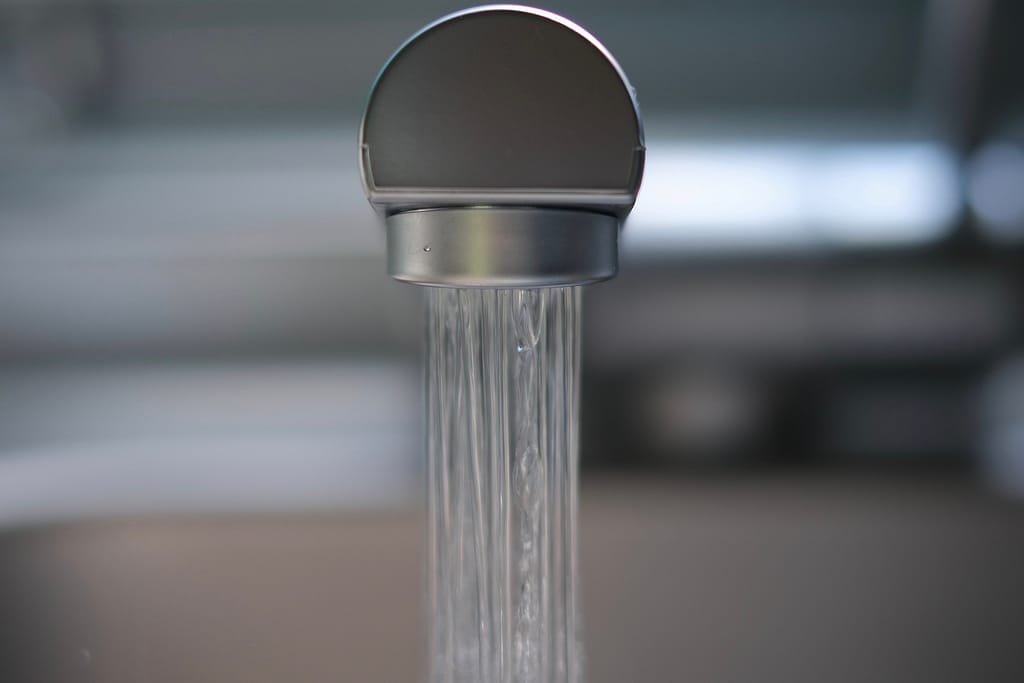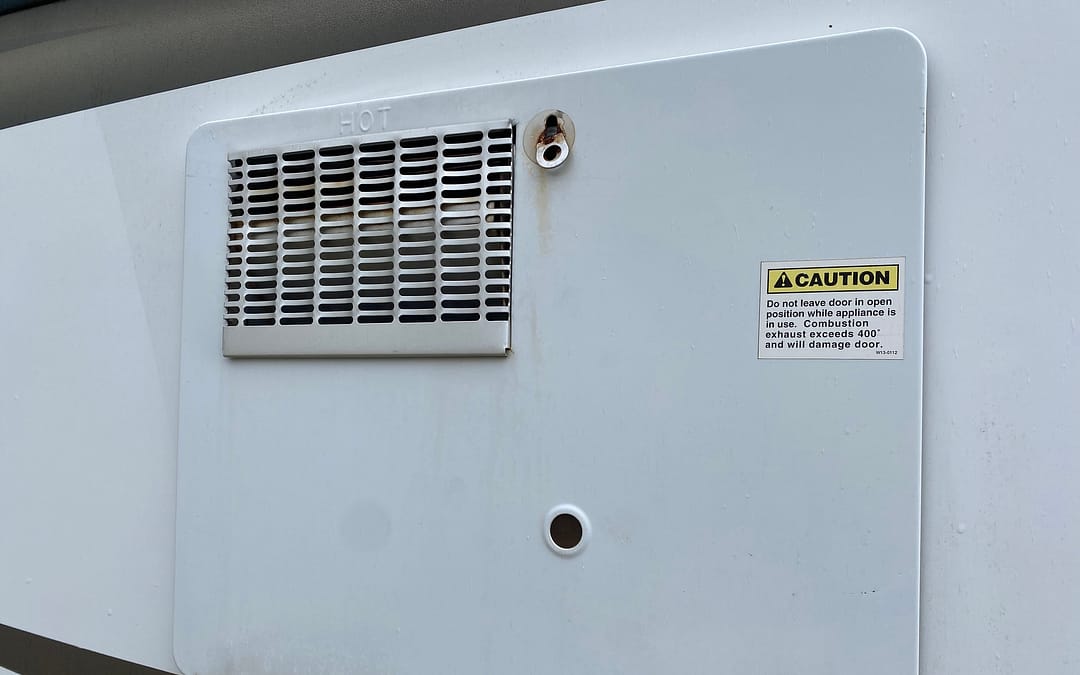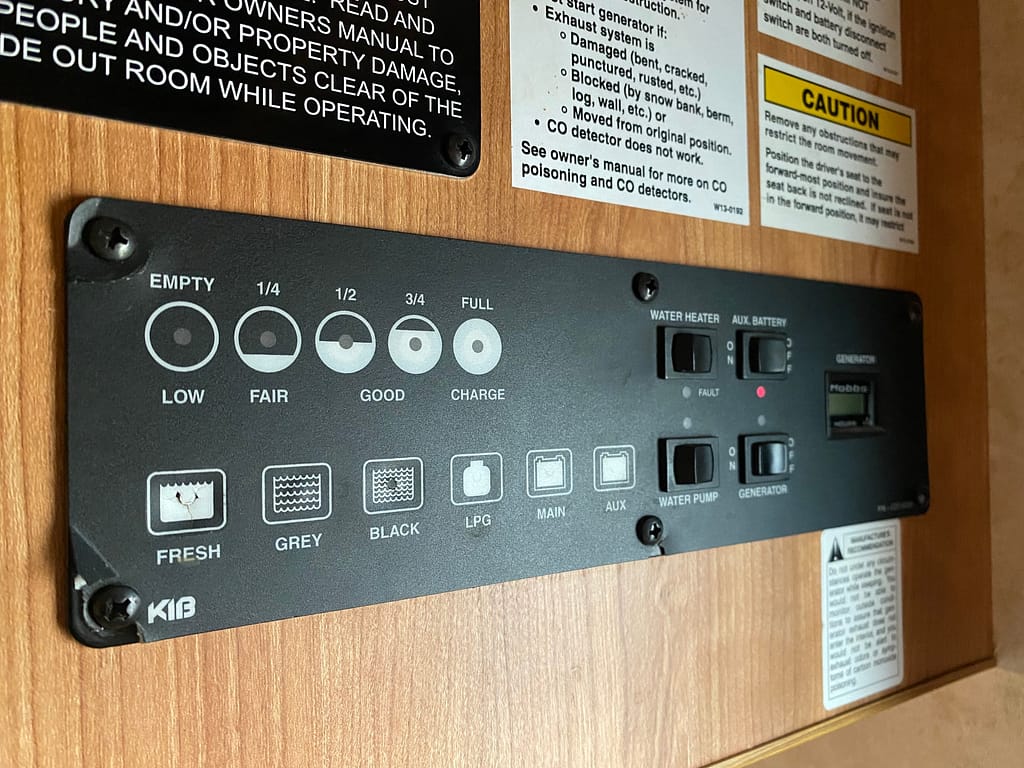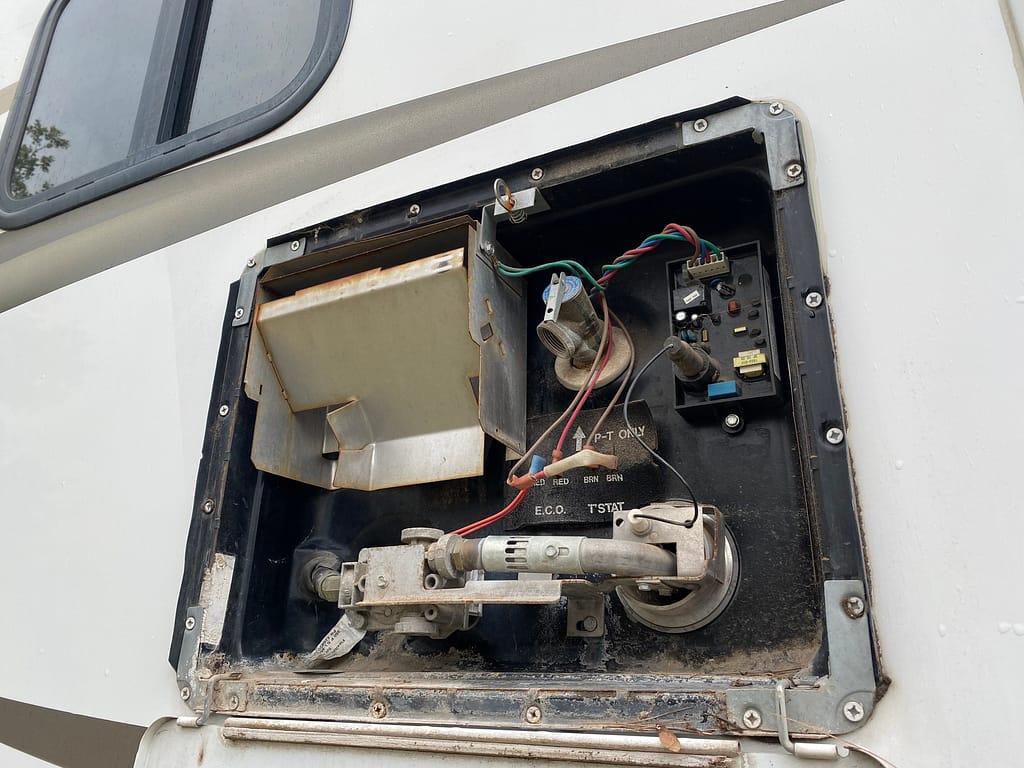This article may contain compensated links, please read our disclaimer for more information.
Everyone loves a good, hot shower. One of the best things about RV life is the fact that you have an RV water heater wherever you roam, meaning you can get one of those showers even if you happen to be parking in a Walmart parking lot.
Of course, you will want to know how to properly use your RV hot water heater before you dive into RV life. That’s where this article comes into play. Below, we’ve included all the most important information on RV water heaters so you can take that first RV shower with complete confidence and ensure your RV water heater lasts for years to come.

Types of RV Water Heaters
First, let’s talk about the different types of RV water heaters. Understanding the options out there and knowing what you have in your rig will help you understand how to use and care for your water heater down the line.
Traditional RV Water Heater
First, there is the traditional RV water heater. These come in two sizes: the 10 gallon RV water heater and the 6 gallon RV water heater. The size refers to the tank on the heater, which holds the water to be heated up. Obviously, most people prefer the larger 10 gallon size, but in many cases, this larger tank simply isn’t practical in the tiny space of an RV.
RV Tankless Water Heater
These days, many rigs come with a tankless water heater for an RV motorhome or trailer. These RV hot water heaters heat water on demand without the use of a tank. Not only does this save space, it also cuts back on weight in the RV and removes the need to wait for water to heat up.
Unfortunately, RV tankless water heaters also require a certain amount of water pressure to function properly. Most RV water pumps don’t provide this pressure, meaning those who camp without city water hookups may want to do some research before choosing a tankless option.
Wondering how to convert an RV water heater to tankless? The video below offers some great information.
Gas vs Electric RV Water Heater
Some RV water heaters run off of propane, using a small flame in a burner to heat the water. Others use electricity, heating the water with an electric RV water heater element. There are both gas and electric versions of traditional-style water heaters, and there are gas and electric versions of tankless water heaters. Additionally, many traditional water heaters offer both electric and gas heating capabilities.
Gas water heaters are ideal for those who camp without electric hookups, as they can heat water with very little electricity. Meanwhile, many who spend all of their time in RV parks with electrical hookups prefer electric RV hot water heaters, as they don’t deplete the propane tanks on the RV.
If you plan to do a bit of boondocking and a bit of RV park camping, a combo water heater is probably your best bet.
How to Use an RV Water Heater
Using a tankless RV water heater is pretty straightforward. That said, if you have a traditional water heater with a tank, there are some things you’ll want to know before your first use.
How to Fill RV Hot Water Heater
It is very important that you never run your RV water heater when the tank is empty. Doing so can result in damage to the tank and may even burn out the electric element completely.
Wondering how to fill RV water heater tanks? Lucky for you, it’s pretty easy to do:
- First, make sure your water heater bypass valve is open so you aren’t bypassing the tank entirely.
- Next, connect the RV to city water or fill your freshwater tank.
- If you’re using water from the fresh tank, turn the pump on.
- In both cases, you will want to open the hot water side of a tap and let it run until the stream of water is steady and no more air is coming through.
- Once that happens, you know your tank is full.
How to Turn Your Water Heater On
The next step is to turn your RV water heater on. In most modern RVs, this happens with the flip of a switch that can be found on the control panel of your rig. If you have both gas and electric options available, you can flip both switches on to run both the electric element and the gas burner and thus heat the water faster.
If you aren’t finding a water heater switch on your control panel, it might be that you have to manually light your gas water heater. To do this, turn the pilot knob to the “pilot” position (you may have to press it in and hold it down, depending on the water heater model). Using a long utility lighter, light the propane that is now flowing into the burner, holding the lighter in place until you’re sure the pilot is lit. Once the pilot is lit, turn the knob from “pilot” to “on”. The flame should grow tremendously and will begin to heat the water.
How Long for an RV Water Heater to Heat Up?
Now that you’ve turned your water heater on, you may be wondering how long you need to wait for hot water. In most cases, you will need to wait about 30 minutes for a tank to heat completely. If your tank is the larger 10 gallon size, you may need to wait even longer (up to an hour).
If you prefer not to wait this long every time you shower, you might consider leaving the RV water heater on until it’s time for the tank to be emptied. Just be aware that this will use up propane if you have a gas heater!
Taking Care of Your RV Hot Water Heater
Obviously, you will want to take good care of your RV hot water heater. The tips below will help you do just that so you can have hot water on the road for years to come.
Should You Sanitize RV Hot Water Heater?
Most people sanitize their freshwater tank once or twice a year. Should you sanitize your RV water heater as well? Most people do run the bleach water mixture used to clean their fresh water tank through the water heater and the water lines using the RV water pump.
We also recommend cleaning the water heater twice a year using an RV water heater rinser and white vinegar. This helps get rid of buildup and sediment.
Should I Drain My RV Water Heater after Each Use?
Many people wonder, “Should I drain my water heater after each use?” If you are living in the RV full time and using the water heater daily, no, you don’t need to empty the tank every time you move. Simply cleaning twice a year should be sufficient.
That said, if you will be leaving the RV to sit for more than two weeks at a time, you probably should empty the tank in order to avoid returning to a tank full of yucky water. This is super easy to do, as it only requires you to remove a plug.
Changing Your RV Water Heater Anode Rod
If you have an Atwood RV water heater, you will need to remember to keep up with the anode rod. You see, these heaters are porcelain lined, and a sacrificial anode rod is used to attract minerals that may otherwise eat up that porcelain lining. The anode rod gets used up over time and must be replaced in order to protect the tank.
We recommend checking your RV water heater anode rod each time you clean the water heater tank. If it is 50% gone, it’s time for a new one.
Cleaning the Water Heater Burner Tube
Did you know spiders are attracted to the smell of propane? Because of this, these little critters LOVE to make themselves at home in RV water heater burner tubes. This leads to a clogged tube and a water heater burner that will not light.
For this reason, we recommend blowing out the water heater burner tube with compressed air after pulling your RV out of storage and anytime it doesn’t want to light. For particularly difficult clogs, you might also consider using pipe cleaners.
Winterizing an RV Hot Water Heater
If you’ll be living in your RV over the winter, you are probably planning to head south, add skirting, or take other precautions. In this case, winterizing the water system likely isn’t necessary.
That said, if your RV will be in storage during the winter months, you will need to winterize the water system, including the water heater. To do this, you will need a water heater bypass valve, something that some RVs come equipped with but others need added aftermarket.
Winterizing your RV hot water heater involves turning the heater off, waiting for the water to cool, emptying the tank completely, rinsing out debris with the aforementioned rinsing tool, and turning the bypass valve so the tank is disconnected from the rest of the water system.
From there, you can continue winterizing the rest of the water system. Be sure to remember the water heater when de-winterizing in the spring!
Inspect Before Each Use
Our last bit of advice? Be sure to visually inspect your water heater after each move. This will help you catch black marks caused by an improper air/fuel mixture, debris caught in the vent, gunk in the burner, and other potential problems.
With these tips and tricks, you should be able to take many hot showers as you tour the country. Enjoy!
There you have it, our top tips for family RV living. Use these tips and you might just find yourself enjoying fulltime RV living for years to come!
Join Fulltime Families
Fulltime Families Members get access to the best resources, community and discounts.
Fulltime Families is a participant in the Amazon Services LLC Associates Program, an affiliate advertising program designed to provide a means for sites to earn advertising fees by advertising and linking to amazon.com, amazon.co.uk, amazon.ca. Amazon and the Amazon logo are trademarks of Amazon.com, Inc. or its affiliates.



